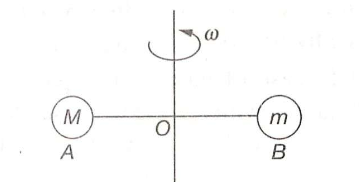An object flying in the air with velocity \((20 \hat{i}+25 \hat{j}-12 \hat{k})\) suddenly breaks into two pieces whose masses are in the ratio of \(1:5.\) The smaller mass flies off with a velocity \((100 \hat{i}+35 \hat{j}+8 \hat{k})\). The velocity of the larger piece will be:
1. \( 4 \hat{i}+23 \hat{j}-16 \hat{k}\)
2. \( -100 \hat{i}-35 \hat{j}-8 \hat{k} \)
3. \( 20 \hat{i}+15 \hat{j}-80 \hat{k} \)
4. \( -20 \hat{i}-15 \hat{j}-80 \hat{k}\)
1. \( 4 \hat{i}+23 \hat{j}-16 \hat{k}\)
2. \( -100 \hat{i}-35 \hat{j}-8 \hat{k} \)
3. \( 20 \hat{i}+15 \hat{j}-80 \hat{k} \)
4. \( -20 \hat{i}-15 \hat{j}-80 \hat{k}\)
A particle starting from rest moves in a circle of radius \(r\). It attains a velocity of \(v_0~\text{m/s}\) on completion of \(n\) rounds. Its angular acceleration will be:
1. \( \dfrac{v_0}{n} ~\text{rad} / \text{s}^2\)
2. \( \dfrac{v_0^2}{2 \pi {nr}^2}~ \text{rad} / \text{s}^2 \)
3. \( \dfrac{v_0^2}{4 \pi {n}{r}^2}~ \text{rad} / \text{s}^2 \)
4. \( \dfrac{v_0^2}{4 \pi {nr}} ~\text{rad} / \text{s}^2 \)
A particle of mass \(5m\) at rest suddenly breaks on its own into three fragments. Two fragments of mass \(m\) each move along mutually perpendicular directions with speed \(v\) each. The energy released during the process is:
| 1. | \(\dfrac{3}{5}mv^2\) | 2. | \(\dfrac{5}{3}mv^2\) |
| 3. | \(\dfrac{3}{2}mv^2\) | 4. | \(\dfrac{4}{3}mv^2\) |
A solid cylinder of mass 2 kg and radius 50 cm rolls up an inclined plane of angle of inclination . The centre of mass of the cylinder has a speed of 4 m/s. The distance travelled by the cylinder on the inclined surface will be
1. 2.2 m
2. 1.6 m
3. 1.2 m
4. 2.4 m
Two balls of mass M = 9 g and m = 3 g are attached by massless threads AO and OB. The length AB is 1 m. They are set in rotational motion in a horizontal plane about a vertical axis at O with constant angular velocity . The ratio of length OB and AO for which the tension in threads are same will be-

(1) 1
(2) 2
(3) 3
(4) 4
Internal forces cannot change:
(1) the kinetic energy of a system.
(2) the mechanical energy of a system.
(3) the momentum of a system.
(4) all of these
The masses are connected to the two ends of a compressed spring. Now, when the masses are released on a smooth surface, they will move away with
(1) the same magnitude of the force.
(2) the equal magnitude of linear momentum.
(3) the greater kinetic energy of the first body than that of the second body.
(4) All of these
Four masses are joined to light circular frames as shown in the figure. The radius of gyration of this system about an axis passing through the center of the circular frame and perpendicular to its plane would be:
(where '\(a\)' is the radius of the circle)

1. \(\frac{a}{\sqrt{2}}\)
2. \(\frac{a}{{2}}\)
3. \(a\)
4. \(2a\)
A disc of mass \(M\) and radius \(R\) starts falling down as shown in the figure. The string unwinds without slipping on the disc. The instantaneous power developed by the tension is:
1. \((T\times R \omega)\)
2. \((T\times R \omega)/2\)
3. \(2(T\times R \omega)\)
4. zero
The rotational analouge of equation \(F=\frac{mdv}{dt}\) is:
| 1. | \(\tau=\frac{dL}{dt}\) |
| 2. | \(\tau=I \frac{d\omega}{dt}\) |
| 3. | \(\tau=I \frac{dI}{dt}\omega\) |
| 4. | \(\tau=I\frac{d\omega}{dt}+\frac{dI}{dt}\omega\) |







